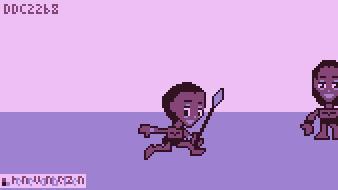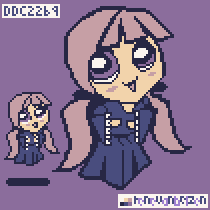Philosophizing about software sprites
While reading through some articles about hardware sprites, sometimes called movable object blocks (MOBs), I realized that the C64 is probably too slow to move software driven sprites. In 1/60 s at ± 1.02 Mhz there are 17000 instruction cycles for an interrupt, or (17000 / 4 =) 4250 average instructions per interrupt cycle.
A typical copy operation is with zero page indexed addressing in a loop requires 14 instruction cycles per copied byte. Add to this a bit shift in a buffer (add another 4 cycles), and an area of 32 by 23 pixels to hold a 24 by 21 pixel MOB, then a back of the envelope calculation gives us (4 x 23 x 18 =) 1656 instruction cycles per pixel shifting MOB, at 60 fps. With nothing else to do, that would give us (17000 / 1656 =) 10 MOBs at most.
If the Kernal is supposed to do something, like being able to run Basic, then it’s probably feasible to maintain 3 MOBs at most.

Another calculation. What if one wanted to fill a whole screen, all 1000 bytes at 14 instruction cycles per byte? With the interrupt disabled, that would make a refresh cycle possible of at most 1/7th of a second, which is clearly noticeable. It makes sense in that case to use a frame buffer, and switch buffers after a buffer has been updated. This would enable slowly animating backgrounds, in other words, choppy animation, which could be interesting in some cases. There wouldn’t be any redrawing of the screen, breaking suspension of disbelief in most players.
Of course, it’s possible to rewrite only a part of the buffer, so the frame rate can be increased. Using the estimated 3 MOBs per 1/60 s. That is ((4 MOBs of 23 rows of 4 bytes) / (40 bytes per line) =) 9 lines per 1/60 s, or around (9 / 25 ≈) ⅓ of the screen which can be believably animated using a frame buffer. This needn’t be a contiguous areas. Disparate parts of the screen could be animated, at some instruction cycle cost to update zero page pointers to new values.
I should emphasize, this is all theoretical (philosophical?) and for 2-color MOBs. With multi-colored MOBs more bytes need to be updated, reducing the frame rate by at least 50 percent. The “claims” above have to be proven by code first.

It was fun dreaming about such an endeavor, and see what the possible limits would be. For snappy code, one should really disable the Kernal interrupt routine, and use one’s own instead. I suppose this is why most video games require a reset to return to Basic. If Basic has to coexist, it will limit what kind of games can be played. Fast moving action-based games are probably not among those. In that case, you’re probably already committed to using hardware sprites.